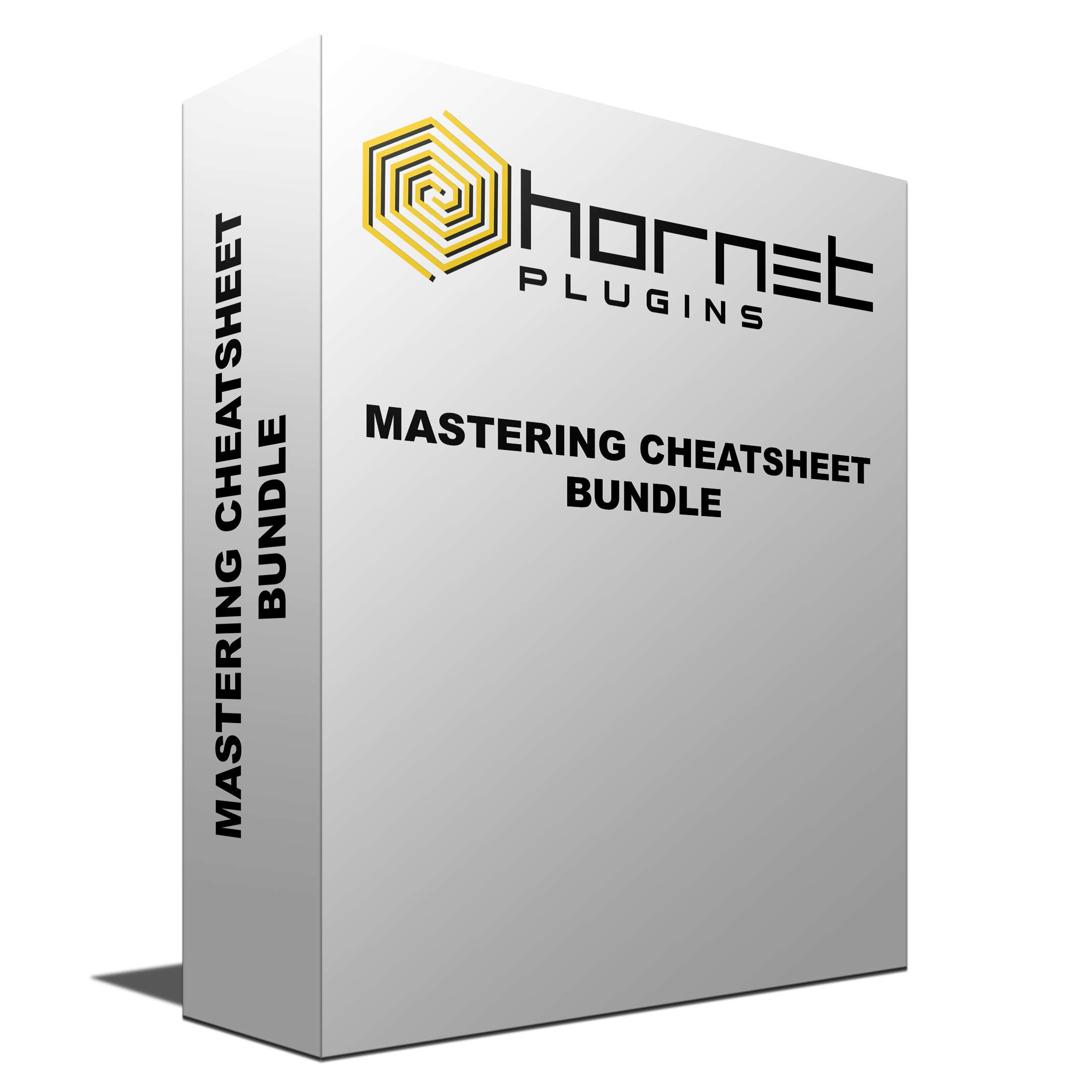HoRNet Plugins 85% off with the code BIGEASTER for the next |
A quick guide that sums all the steps needed for a good master, a handy cheat sheet to reference everytime you need it
Together with mastering engineer Alex Picciafuochi, we have prepared a quick “mastering cheat sheet” to help you visualize the most important steps needed to get a good master for you and your clients. Enjoy the reading!
 Credits: Drumcode, Suara, OFF Recordings, Etruria Beat, Luca Agnelli, Moby (Rmx), Coccoluto, TheDub, Caneschi, Robert Miles (Remastering for CD, Digital and Vinyl:”Dreamland” and “The Best Of Robert Miles”). Feiyr by DANCE ALL DAY GmbH
Credits: Drumcode, Suara, OFF Recordings, Etruria Beat, Luca Agnelli, Moby (Rmx), Coccoluto, TheDub, Caneschi, Robert Miles (Remastering for CD, Digital and Vinyl:”Dreamland” and “The Best Of Robert Miles”). Feiyr by DANCE ALL DAY GmbH
1
First of all, buy a song in a lossless format, perhaps indicated by the customer, to be used as a reference to which you can approach.

2
Remove unwanted noises or parts at the head and tail of the song, create empty space at the beginning of the file to avoid ruining the first transients, due to an inaccurate PDC (Plugin Delay Compensation).

3
With a good surgical equalizer, identify and attenuate the resonances, those frequencies that disturb the cleanliness of the listening, paying attention to the frequencies that correspond to the notes played.

You can use the very good equalizer found in our ChannelStrip MK3, or if you want a more automated workflow, you can use our ThirtyOne equalizer.
4
Using a spectrum analyzer as a reference, remove the sub-frequencies with an HPF filter. With the M / S mode, you exclude the stereophony of frequencies below 80 / 120Hz.

We have designed a plugin exactly for this task, it’s our HoRNet ElliptiQ, and it can also work dynamically, according to the loudness of your bass
5
Apply a multiband compressor or dynamic equalizer to control excesses in specific areas of the audio spectrum.

With the help of our DynEQ dynamic equalizer, you can keep under control resonances that happens only on certain part of the track. It can also set the threshold by itself!
6
Apply a single band compressor to mix everything slightly or, to warm up even more, use a Tape Simulator.

If you want to use a full band compressor there’s nothing better than our Multicomp Plus MK2 as it lets you try out five different compression models to find the perfect dynamics management of your track. You can also add a bit of tape saturation with our HoRNet Tape, a plugin meant to simulate the effect of multitrack tape recorders.
7
With a musical equalizer, correct the general tonal balance. Also give a slight opening of the stereo front by monitoring, with the right instrumentation, phase and opening of the stereo front.

For this step you can use our SW34EQ MK2 equalizer, a very gentle tone shaping tool, also have a look to our TrackUtility MK2 that has a good stereo widener. To keep your stereo field under control, just use our free StereoView plugin
8
Using a good level analysis tool as a reference, with a couple of Limiters, the last of which with the ISP function active, or with a Clipper followed by a Limiter, always with ISP, bring the output signal to the level.

Always reference your levels with our ELM128 MK2 loudness meter or if you prefer a simple meter use our LU Meter MK2, they can also normalize your track to the LUFS leve you decide. As a limiter you can try out our Magnus MK2 that includes a clipper and a true peak limiter with an RMS and LUFS meter as added bonus
9
Always export in different formats, including a 24bit version and a 320kbps MP3, using a Dither for the reduction, from the internal 64 / 32bit of the DAW, to the versions with less resolution, especially for 16bit files.

If you want to use the plugins we suggest in this guide, we are offering you the chance to get them 40% off when bough in bundle:
